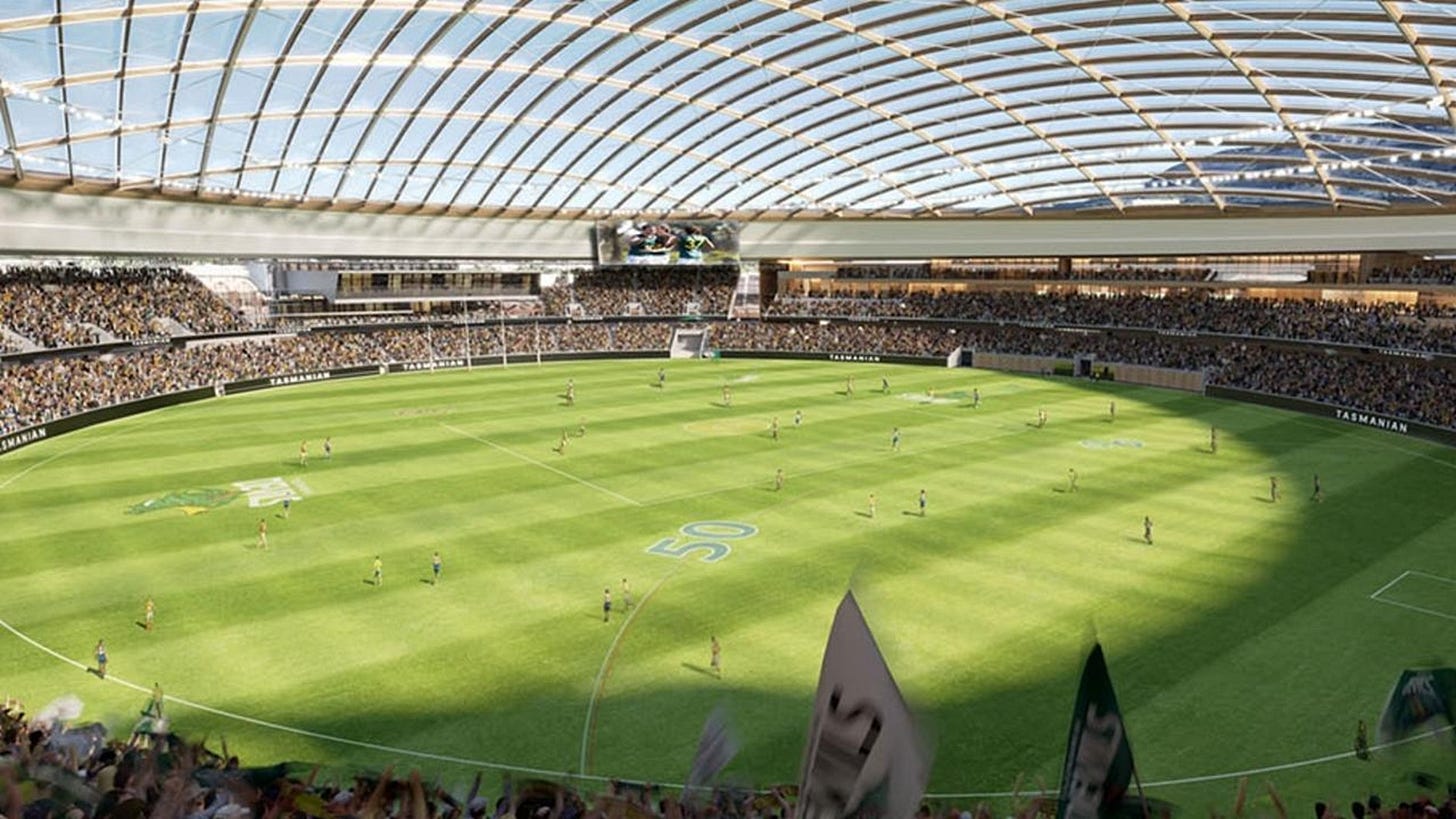Mac Point Stadium isn’t just about sport — it’s Tasmania finally backing itself
By now, you've probably heard the noise. "We don’t need a stadium." "It costs too much." "Spend the money elsewhere." And look, that sort of talk might win the Facebook comments section, but it won’t win the future.
Let’s be clear: Macquarie Point Stadium is not just about AFL. It’s not just a patch of grass with a timber roof so a few people can kick a Sherrin around. It’s bigger than that. Much bigger. This project is about Tasmania finally standing up and saying: We are open for business. We’re not just the state with beautiful views and quaint charm. We’re not a novelty act or some “off-the-beaten-track” destination. We are serious players. And we’re ready to prove it.
This stadium is a catalyst. It’s a circuit-breaker. It’s a long-overdue injection of ambition, and it has the potential to change the way this state sees itself—and the way the rest of the country sees us.
Right now, Macquarie Point is a wasteland. A dead zone. A prime slice of Hobart waterfront sitting idle while the city chokes on under-investment and small thinking. What’s being proposed isn’t just a venue—it’s an entire urban renewal. A world-class stadium at its heart, yes—but surrounding it, a reinvigorated, bustling district that can finally match Hobart’s natural beauty with built-up brilliance. Pubs. Hotels. Restaurants. Green space. Culture. Life.
The numbers back it up. AEC Group’s independent analysis projects the stadium will generate roughly $143 million annually for the Hobart economy during its construction phase. Once open, it’s expected to contribute around $179 million every single year. That’s not spin. That’s real economic activity—tradies on the tools, hospitality venues buzzing, tourists checking in, conferences being booked. Tasmania finally getting a slice of the national events calendar.
And yet, here we are. Stuck. Debating whether ambition is worth the risk. Whether progress is worth the price tag. We’ve got critics acting like $945 million is being dumped into a black hole. It’s not. It’s being invested into infrastructure that will serve this state for decades. Infrastructure that makes us competitive. Infrastructure that—shock horror—actually creates return on investment.
You want to talk costs? Fine. Let’s also talk about the cost of doing nothing. Because that’s what the anti-stadium crowd never factors in. The cost of missing out. The cost of opportunities lost. The cost of young Tasmanians leaving because they don’t see a future here. The cost of being left behind while the other states, as usual, lap us.
We’re not the poor cousin. We shouldn’t act like it. This stadium isn’t about keeping up with the mainland. It’s about finally believing that Tasmania deserves nice things too. Big things. Bold things.
Yes, there are concerns to work through. The Tasmanian Symphony Orchestra has raised valid issues about sound interference near the Federation Concert Hall. There are heritage questions, environmental hurdles, and financial scrutiny to be had. And that’s fair—we should do it properly. But doing it properly doesn’t mean doing nothing. It means building it smart. It means compromise, not cancellation.
And to those saying, “we don’t need it”—I say this: We didn’t need MONA either. We didn’t need the Bridgewater Bridge. But look what happened when we built them. MONA changed Tasmania’s global image. The new bridge connects our regions like never before. Big projects build big futures. That’s not idealism—it’s history.
This isn’t just about AFL, though having our own team is long overdue. It’s about creating a place that can host world-class events. Concerts. International sport. Cultural festivals. Business summits. This stadium puts Hobart in the conversation, not just on the fixture list.
Tasmania has a window of opportunity here—and that window doesn’t stay open forever. If we let fear dictate the future, if we keep flinching at the sight of a price tag, we’ll keep missing the moments that could actually transform this state.
Mac Point isn’t a burden. It’s a bet on ourselves. And I, for one, think it’s a bet worth making.
So here’s the callout: to our leaders—step up. Pass the legislation. Lock this in. Don’t let it become another “what could’ve been.” To the public—demand more than just mediocrity. Demand a future we can be proud of.
This is more than a stadium. It’s a line in the sand. It’s Tasmania choosing to play offence, not just defend what little we’ve got left.
And if we build it right, trust me—they will come.





